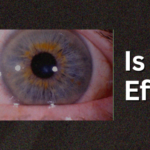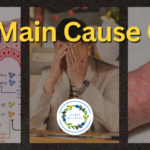What Are The 10 Early Warning Signs Of Diabetes?
It is essential to recognize the early signs of Diabetes in order to manage your health proactively. People of all ages are susceptible to the common and potentially serious disease known as diabetes. We examine the ten most important signs that could indicate the start of diabetes in this blog.
The early identification of warning indicators can lead to timely intervention and improved quality of life, ranging from subtle changes in daily habits to more noticeable symptoms. Whether you’re looking for information for a loved one or yourself, this thorough blog tries to shed light on the various signs of diabetes and provide you with the knowledge you need to take charge of your health.
What Are The Top 10 Early Warning Signs Of Diabetes?
1.FREQUENT URINATION
Despite being frequently disregarded, frequent urination can be a critical sign of diabetes. This common symptom is marked by an increased need to urinate, especially at night even when you’ve limited your water intake and caffeine. Although there could be a number of reasons for its persistence, there should be more awareness of a possible connection to diabetes.
Hyperglycemia: Diabetes is characterised by high blood sugar levels, which cause increased urine production as the kidneys struggle to remove excess glucose from the body.
Polyuria: Polyuria, a term used to indicate excessive urine, is a crucial component of diabetic symptoms. It is the outcome of the body’s attempt to eliminate extra sugar from the urine.
Gain insights about the Symptoms of Diabetes by watching our informative video.
2.EXCESSIVE THIRST
Among the 10 warning signs of diabetes, polydipsia, or excessive thirst, is a crucial indicator. Be wary if you feel thirsty even after drinking water. This seemingly unimportant symptom might have serious consequences since it frequently indicates a problem with blood sugar levels. Here’s a closer look at the relationship between diabetes and excessive thirst:
Polydipsia and High Blood Sugar: Diabetes is characterised by high blood sugar levels, which are often linked to excessive thirst. Increased thirst results from the body’s attempt to dilute elevated blood sugar by removing water from cells.
Polydipsia and Polyuria: Polydipsia and Polyuria: Polyuria, another typical symptom of diabetes, is excessive thirst that frequently coexists with frequent urination. These two indicators indicate that the body is attempting to flush out extra glucose through the urine, which causes dehydration and an insatiable thirst.
3.EXTREME FATIGUE
Although it’s sometimes disregarded, extreme fatigue may be a critical early warning sign of diabetes, especially if you discover that you are too weak to perform daily tasks that you used to complete with ease. The ineffective use of glucose by the body as an energy source may be the cause of this extreme fatigue. Elevations in blood sugar levels impact the body’s ability to produce energy, resulting in fatigue that is beyond typical lethargy.
This is a crucial symptom to identify because it might be a sign of diabetes, particularly when combined with other symptoms like increased thirst, frequent urination, and unexplained weight loss. Due to insulin resistance or insufficient insulin production in the body, fatigue may be more pronounced after meals.
4.BLURRY VISION
Not only is blurry vision a common eye problem, but it can also be a serious early indicator of diabetes. Be wary if, during the day, computer screens, menus, books, or road signs suddenly become out of focus. Diabetes-related elevated blood sugar levels can cause several problems with the eyes, including changes in vision. Here’s why blurry vision is an important sign:
Diabetic Retinopathy: Diabetic retinopathy can result from high blood sugar, which damages the blood vessels in the retina. Because of the possibility of distorted or blurry vision, it is critical to keep an eye on changes in vision.
Cataracts: Diabetes increases the risk of cataract development, which results in cloudiness in the eye’s lens. Those who have changes in their eyesight due to this cloudiness should think about getting tested for diabetes.
Glaucoma: Diabetes is associated with an increased risk of glaucoma, a disorder that causes optic nerve damage. For those who are at risk, blurred vision can be a symptom, highlighting the importance of regular eye check-ups.
You will first notice the signs of diabetes before realising you have the disease. We will discuss the signs and symptoms of diabetes with you and explain how to recognize them. Watch and enjoy, please.
5.SLOW WOUND HEALING
Not only may slow wound healing be annoying, but it may also be a precursor to diabetes. People who notice delayed healing from cuts, sores, or wounds should be particularly aware of this possible sign. Here’s why slow wound healing is an important indicator:
Insufficient Insulin Production: Diabetes interferes with the ability of the body to generate enough insulin, which impedes the natural healing process. In the event that insulin is not functioning properly, wounds may heal more slowly, resulting in ongoing problems.
Elevated Blood Sugar Levels: Diabetes-related high blood sugar levels can damage blood vessels and reduce blood flow. The body finds it difficult to get vital nutrients and oxygen to the injured area because of the impaired circulation, which slows down the healing process
Impact on Immune System: People with diabetes may have weakened immune systems, which increases their susceptibility to infections. One possible explanation for slow wound healing could be the body’s inability to fight off infections at the site of injury.
Have you tried everything to help control your diabetes and lead a better quality of life?
Do you sometimes wonder, how other people who have diabetes, are able to live a much more fulfilled life? Then our FREE Best Ways to Treat Diabetes Guide is must for you to learn the best proven ways to treat your diabetes.
6.DRY MOUTH AND SKIN
Dry mouth and skin could be more than simply everyday annoyances; they could be important but subtle signs of diabetes. Understanding these symptoms is crucial for prompt detection and management. Here’s why dry mouth and skin are important warning signs:
Dehydration and Polyuria: Diabetes can cause polyuria, or excessive thirst and frequent urination, which can contribute to dehydration and cause dry mouth and skin.
Poor Circulation: Diabetes affects blood vessels, which results in impaired circulation. Decreased blood flow can affect the moisture content of the skin and exacerbate itching and dryness.
Skin Changes: Diabetes can induce early skin symptoms such as dry skin. Additionally, it may result in more obvious skin abnormalities such as acanthosis nigricans, which is characterised by velvety, darker skin especially on the neck, elbows, knees, and knuckles.
7.MOOD CHANGES
If you exhibit indications of depression-like symptoms, are noticeably irritable or grumpy, or if relatives or friends comment on your strange demeanour, you should be cautious. Mood swings could be more than just everyday stressors; they might also be subliminal indicators of diabetes, an underlying medical condition. Understanding this connection is essential for prompt intervention and improved overall well-being. The following explains why mood swings may be early indicators of diabetes:
Blood Glucose Fluctuations: Blood glucose levels fluctuate frequently in people with diabetes. Mood swings brought on by high or low blood sugar levels may result in feelings of irritability, confusion, and emotional instability.
Impact on Mental Health: Diabetes-related blood sugar fluctuations can have an impact on mental health. Anger or melancholy may be linked to elevated blood glucose levels, whereas anxiety and dizziness may result from decreased levels.
Watch our insightful video and learn about how your eyes can indicate signs of Diabetes.
8.FREQUENT INFECTIONS
Frequent infections can be more than just a string of bad luck; they might also be important indicators of diabetes, an underlying medical condition. For proactive health management and early detection, it is essential to understand this relationship. The following explains why frequent infections may be precursors to diabetes:
Weakened Immune System: Diabetes can reduce the efficiency of the immune system, increasing a person’s susceptibility to infections. Frequent bouts of illness might result from high blood sugar levels impairing the body’s ability to fight against bacteria and viruses.
Impaired Wound Healing: Diabetes-related elevated blood sugar levels might make it more difficult for the body to heal wounds efficiently. Infections, both small and serious, can thrive in an environment where wound healing is slow.
Increased Susceptibility: Diabetes can cause urinary tract infections, skin infections, and yeast infections, among other things. People with diabetes may get recurrent infections in these areas.
9.TINGLING OR NUMBNESS
Certain parts of the body experiencing tingling or numbness could be more than just a momentary discomfort; they could be an early warning sign of diabetes. Take caution if, upon waking, you have burning-like tingling or numbness in your feet. Understanding the importance of this sensation is essential for identifying any health issues and implementing preventive measures. The following explains why tingling or numbness is considered a precursor to diabetes:
Poor Blood Circulation: Poor blood circulation, particularly to the extremities, can result from diabetes. Nerve function may be affected by tingling or numbness, which is frequently experienced in the fingers or toes.
Peripheral Neuropathy: Peripheral neuropathy is a disorder where long-term nerve damage results from high blood sugar levels. One typical sign that indicates nerve damage is tingling or numbness.
10.INCREASED HUNGER
If you find yourself eating more often than normal in a day or that you are extremely hungry even after you have eaten, you should be cautious. It may be more than simply a passing appetite if you find yourself always wanting more food. An early warning sign of diabetes that can be subtle but significant is increased hunger. Why it matters is as follows:
Insulin Resistance: Diabetes, especially type 2, makes it difficult for the body to use insulin as intended. Insulin resistance causes cells to take in glucose less effectively, which signals the body to seek out more energy and increases appetite.
Elevated Blood Sugar Levels: Blood sugar levels are frequently increased in diabetics. Hunger signals remain after eating because the body’s cells are starved of glucose due to insulin resistance, which prevents glucose from entering the cells efficiently.
Polyphagia: Polyphagia, the medical term for excessive hunger, is a well-known sign of diabetes. It is more than just the typical hunger one could have in between meals.
Weight Fluctuations: Weight fluctuations may result from increased hunger in addition to other diabetic symptoms. Some people may lose weight, yet overeating may cause others to gain weight.
Conclusion
In unravelling the mysteries of diabetes, understanding its early warning signs becomes paramount for proactive health management. The tenfold symptoms encapsulate a subtle yet impactful narrative of the body’s distress signals. From the subtlety of excessive thirst and hunger to the urgency of frequent urination, these signs are the body’s way of saying something isn’t right. Navigating the complexities of diabetes involves not only recognizing these symptoms but also fostering a holistic approach to health. Regular monitoring, balanced nutrition, and an active lifestyle are crucial companions on the journey to diabetes awareness and prevention. By embracing these insights, individuals empower themselves to make informed choices, paving the way for a healthier and more resilient future.
To learn more about Diabetes, check out our other related blogs:
What Are The First Signs of Diabetes?
How To Treat Diabetes Using Iridology
Can Your Eyes Indicate Signs of Diabetes?
Practical Ways To Treat And Prevent Diabetes Naturally
Check out and order our Amazon Number 1 Bestseller book
The Diabetes Solution : A 28 Day Action Plan For Lowering Blood Sugar Naturally.
NEXT STEP
Book in a complimentary 15 minutes Zoom call with us (valued at £99) to enable us to clarify questions you may have on a specific health concern.






